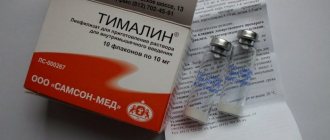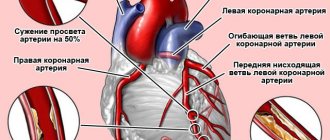Release form and composition
Dosage form - capsules: size No. 2, hard gelatin, opaque, body - light pink, cap - pinkish-brown; contents – pellets of white or almost white color (7 or 10 pcs. in contour-free packaging, 1 or 2 packs in a cardboard pack; 10, 14 or 28 pcs. in polymer cans, 1 can in a cardboard pack).
Active ingredient: omeprazole, 1 capsule – 20 mg.
Additional components: calcium carbonate, sodium hydrogen phosphate (disodium phosphate disubstituted), lactose, sodium lauryl sulfate, hypromellose (hydroxypropyl methylcellulose), sucrose, methacrylic acid and ethyl acrylate copolymer (methacrylic acid copolymer L30D), cetyl alcohol, diethyl phthalate, sodium hydroxide, propylene glycol, polysorbate 80 (Tween-80), titanium dioxide, povidone (polyvinylpyrrolidone), talc, mannitol.
Capsule composition (body and cap): gelatin, methyl parahydroxybenzoate (methylhydroxybenzoate), titanium dioxide (E171), propyl parahydroxybenzoate (propylhydroxybenzoate), red iron oxide (E172); or gelatin, titanium dioxide (E171) and iron oxide red (E172).
pharmachologic effect
Pharmacodynamics
Gastrozole is a proton pump inhibitor and reduces the production of gastric acid by inhibiting the activity of H+/K+-ATPase in the parietal cells of the stomach, resulting in the blocking of the final stage of hydrochloric acid. The drug is a prodrug and is activated in an acidic environment characteristic of the secretory tubules of parietal cells.
Omeprazole reduces stimulated and basal secretion, regardless of the type of stimulus. After taking 20 mg of Gastrozol, the antisecretory effect appears within the first hour (maximum after 2 hours). Maximum secretion is inhibited by 50% within 24 hours. A single daily dose of the drug guarantees rapid and effective suppression of daytime and nighttime secretion of the gastric glands, which reaches a maximum after 4 days of treatment and disappears 3-4 days after completion of the course of therapy. In patients with duodenal ulcer, taking 20 mg of Gastrozol stabilizes the intragastric acidity (pH) at 3.0 for 17 hours.
Pharmacokinetics
The drug has a high degree of absorption, and its maximum concentration in the body is observed 0.5–3.5 hours after oral administration. Bioavailability is 30–40%, increasing to almost 100% in case of liver failure. The active component of the drug has increased lipophilicity and easily penetrates the parietal cells of the stomach, binding to plasma proteins (albumin and acid α1-glycoprotein) by 90–95%.
The half-life of omeprazole is 0.5–1 hour (with hepatic dysfunction – 3 hours), and clearance reaches 500–600 ml/min. The active substance Gastrozol is almost completely metabolized in the liver under the influence of the CYP2C19 enzyme system, forming 6 pharmacologically inactive metabolites (hydroxyomeprazole, sulfonic and sulfide derivatives, etc.). The drug belongs to the group of inhibitors of the CYP2C19 isoenzyme and is excreted through the kidneys (70–80%) and bile (20–30%). Chronic renal failure reduces excretion in proportion to the decrease in creatinine clearance. In elderly patients, the bioavailability of omeprazole increases, and the rate of its elimination decreases.
Comparison of addiction between Gastrozole and Omeprazole
Like safety, addiction also involves many factors that must be considered when evaluating a drug.
So, the totality of the values of such parameters as “o syndrome” for Gastrozole is quite similar to the similar values for Omeprazole. Withdrawal syndrome is a pathological condition that occurs after the cessation of intake of addictive or dependent substances into the body. And resistance is understood as initial immunity to a drug; in this it differs from addiction, when immunity to a drug develops over a certain period of time. The presence of resistance can only be stated if an attempt has been made to increase the dose of the drug to the maximum possible. At the same time, Gastrozole has a fairly low “syndrome” value, just like Omeprazole.
Indications for use
- Exacerbation of peptic ulcer of the stomach and duodenum;
- Reflux esophagitis;
- Gastropathy induced by the use of nonsteroidal anti-inflammatory drugs (NSAID gastropathy);
- Hypersecretory conditions (polyendocrine adenomatosis, stress ulcers of the gastrointestinal tract, systemic mastocytosis, Zollinger-Ellison syndrome);
- Helicobacter pylori infection in patients with gastric and duodenal ulcers (as part of complex therapy).
The drug is also used to prevent gastric and duodenal ulcers.
Application in medical practice
Omeprazole can be used to treat gastroesophageal reflux disease (GERD), peptic ulcers, erosive esophagitis, Zollinger-Ellison syndrome and eosinophilic esophagitis[4][5].
Peptic ulcers
Peptic ulcers can be treated with omeprazole. Treatment of Helicobacter pylori infection can be completed by taking triple therapy with a combination of omeprazole, amoxicillin and clarithromycin for 7-14 days[6]. Amoxicillin can be replaced by metronidazole for patients allergic to penicillin[7].
Treatment of reflux in children
Little evidence was found that medications work in children under one year of age, especially for functional reflux; Mixed evidence has been found as to whether Gaviscon Infant® helps, and that in children with reflux disease (changes on pH testing or on endoscopy) medications such as omeprazole and lansoprazole are likely to help. In older children, proton pump inhibitors and histamine antagonists work better in terms of improvement in symptoms, endoscopic findings, and pH measurements, but no meta-analysis has been performed or whether one drug is superior to the other [8][9].
Instructions for use of Gastrozol: method and dosage
The drug is taken orally by swallowing the capsules whole with a small amount of water, usually in the morning, immediately before meals or during meals.
Recommended doses depending on indications:
- Exacerbation of duodenal ulcer: 1 capsule per day for 2-4 weeks, if necessary, increase the dose to 2 capsules;
- Exacerbation of duodenal ulcer and erosive-ulcerative esophagitis: 1-2 capsules per day for 4-8 weeks;
- NSAID gastropathy: 1 capsule per day for 4-8 weeks;
- Helicobacter pylori infection: 1 capsule 2 times a day in combination with antibacterial agents, course – 7 days;
- Zollinger-Ellison syndrome: the dose is set individually depending on the initial level of gastric secretion. The initial dose is usually 3 capsules per day, if necessary, it is increased to 4-6 capsules and the dose is divided into 2 doses;
- Prevention of relapses of gastric and duodenal ulcers: 1 capsule per day;
- Prevention of relapses of reflux esophagitis: 1 capsule per day for a long time (up to 6 months).
Notes
- ↑ 1 2 3
Omeprazole
(undefined)
.
Register of medicines
. ReLeS.ru (April 21, 2001). Access date: June 21, 2008. Archived February 29, 2012. - ↑ 1 2 3 4
Search in the drug database, search options: INN -
Omeprazole
, flags
“Search in the register of registered drugs”
,
“Search TKFS”
,
“Show lekforms” (undefined)
(inaccessible link).
Circulation of medicines
. Federal State Institution “Scientific Center for Expertise of Medical Products” of Roszdravnadzor of the Russian Federation (March 27, 2008). — A standard clinical and pharmacological article is a by-law and is not protected by copyright in accordance with part four of the Civil Code of the Russian Federation No. 230-FZ of December 18, 2006. Access date: June 21, 2008. Archived September 3, 2011. - Omeprazole - Compound Summary (undefined)
.
PubChem
. The National Library of Medicine (March 25, 2005). Access date: June 21, 2008. Archived February 29, 2012. - ↑ 1 2 3 4 5
Omeprazole
(undefined)
. The American Society of Health-System Pharmacists. Date accessed: October 21, 2021. - Cheng, Edaire.
Proton Pump Inhibitors for Eosinophilic Esophagitis (English) // Current Opinion in Gastroenterology: journal. - Lippincott Williams & Wilkins (English) Russian, 2013. - July 21 (vol. 29, no. 4). - P. 416-420. — ISSN 0267-1379. - doi:10.1097/MOG.0b013e32835fb50e. - PMID 23449027. - Fuccio, Lorenzo;
Minardi, Maria Eugenia; Zagari, Rocco Maurizo; Grilli, Diego; Magrini, Nicola; Bazzoli, Franco. Meta-analysis: Duration of First-Line Proton-Pump Inhibitor–Based Triple Therapy for
Helicobacter pylori
Eradication (English) // Annals of Internal Medicine (English) Russian. : journal. - 2007. - Vol. 147, no. 8. - P. 553-562. - doi:10.7326/0003-4819-147-8-200710160-00008. - PMID 17938394. - Malfertheiner P., Megraud F., O'Morain C., Bazzoli F., El-Omar E., Graham D., Hunt R., Rokkas T., Vakil N., Kuipers EJ
Current concepts in the management of
Helicobacter pylori
infection: the Maastricht III Consensus Report (English) // Gut: journal. — 2007. — June 21 (vol. 56, no. 6). — P. 772—781. - doi:10.1136/gut.2006.101634. - PMID 17170018. - Tighe M, Afzal NA, Bevan A, Hayen A, Munro A, Beattie R. Pharmacological treatment of children with gastro-oesophageal reflux. Cochrane Database of Systematic Reviews 2014, Issue 11. Art. No.: CD008550. DOI: 10.1002/14651858.CD008550.pub2 (unspecified)
. — Medicines for children with gastroesophageal reflux. - Mark Tighe;
Nadeem A Afzal; Amanda Bevan; Andrew Hayen; Alasdair Munro; R Mark Beattie. Pharmacological treatment of children with gastro-oesophageal reflux // Cochrane Systematic Review - Intervention. — 2014. — November 24. - doi:10.1002/14651858.CD008550.pub2. - McTavish D, Buckley MM, Heel RC
Omeprazole. An updated review of its pharmacology and therapeutic use in acid-related disorders (English) // Drugs (English) Russian. : journal. - Adis International, 1991. - Vol. 42, no. 1. - P. 138-170. - doi:10.2165/00003495-199142010-00008. - PMID 1718683. - Abou Chakra, C. N. et al.
Risk factors for recurrence, complications and mortality in Clostridium difficile infection: a systematic review (English) // PLoS ONE: journal. — 2014. — June 21 (vol. 9, no. 6). - P. e98400. - doi:10.1371/journal.pone.0098400. - Bibcode: 2014PLoSO...998400A. - PMID 24897375. - Yang, Yu-Xiao et al.
Long-term proton pump inhibitor therapy and risk of hip fracture (English) // JAMA: journal. - 2006. - Vol. 296, no. 24. - P. 2947—2953. - doi:10.1001/jama.296.24.2947. - PMID 17190895. - Yu, Elaine W. et al.
Proton pump inhibitors and risk of fractures: a meta-analysis of 11 international studies (English) // The American Journal of Medicine (English) Russian. : journal. - 2011. - Vol. 124, no. 6. - P. 519-526. - doi:10.1016/j.amjmed.2011.01.007. - PMID 21605729. - Hess, M. W. et al.
Systematic review: hypomagnesaemia induced by proton pump inhibition (English) // Alimentary Pharmacology & Therapeutics (English) Russian. : journal. - 2012. - Vol. 36, no. 5. - P. 405-413. - doi:10.1111/j.1365-2036.2012.05201.x. - Neal, Keith;
Logan, Richard. Potential gastrointestinal effects of long-term acid suppression with proton pump inhibitors (English) // Alimentary Pharmacology & Therapeutics (English) Russian. : journal. - 2001. - Vol. 15, no. 7. - P. 1085-1085. - doi:10.1046/j.1365-2036.2001.0994a.x. - PMID 11421886. - Sarzynski, Erin et al.
Association between proton pump inhibitor use and anemia: a retrospective cohort study (English) // Digestive Diseases and Sciences (English) Russian. : journal. - 2011. - Vol. 56, no. 8. - P. 2349—2353. - doi:10.1007/s10620-011-1589-y. - PMID 21318590. - McColl, Kenneth EL
Effect of proton pump inhibitors on vitamins and iron // The American Journal of Gastroenterology (English) Russian. : journal. - 2009. - Vol. 104. - P. S5—S9. - doi:10.1038/ajg.2009.45. - PMID 19262546. - Harmark, Linda.
Proton pump inhibitor-induced acute interstitial nephritis (English) // British Journal of Clinical Pharmacology (English) Russian. : journal. - 2007. - Vol. 64, no. 6. - P. 819-823. - doi:10.1111/j.1365-2125.2007.02927.x. - PMID 17635502. - Corleto, VD
Proton pump inhibitor therapy and potential long-term harm. (English) // Curr Opin Endocrinol Diabetes Obes: journal. — 2014. — 21 February (vol. 21, no. 1). - P. 3-8. - doi:10.1097/med.0000000000000031. - PMID 24310148. - Eusebi, L.H.;
Rabitti, S; Artesiani, M.L.; Gelli, D; Montagnani, M; Zagari, R. M.; Bazzoli, F. Proton pump inhibitors: Risks of long-term use. (undefined) // Journal of Gastroenterology and Hepatology. — 2021. — 21 July (vol. 32, no. 7). — P. 1295—1302. - doi:10.1111/jgh.13737. - PMID 28092694. - Pasternak, Björn;
Hviid, Anders. Use of Proton-Pump Inhibitors in Early Pregnancy and the Risk of Birth Defects (English) // New England Journal of Medicine: journal. - 2010. - Vol. 363, no. 22. - P. 2114—2123. - doi:10.1056/NEJMoa1002689. - PMID 21105793. - Omeprazole drug summary (undefined)
. PDR.net. Date accessed: October 21, 2021. Archived March 3, 2014. - LACTMED: OMEPRAZOLE (unspecified)
(March 10, 2015). Date accessed: October 21, 2021. Archived September 8, 2021. - Proton Pump Inhibitor: Use in Adults (unspecified)
(PDF) (unavailable link).
CMS Medicaid Integrity Program
. Retrieved November 12, 2021. Archived December 12, 2013. - Fitzakerley, Janet
2014 Treatments for Acid-Peptic Diseases.
(undefined)
. University of Minnesota Medical School Duluth. Date accessed: October 21, 2021. Archived April 19, 2014. - IJ;
Douglas; Evans, S. J.; Hingorani, A.D.; Grosso, A. M.; Timmis, A; Hemingway, H; Smeeth, L. Clopidogrel and interaction with proton pump inhibitors: comparison between cohort and within person study designs (English) // BMJ: journal. - 2012. - Vol. 345. - P. e4388. - doi:10.1136/bmj.e4388. - PMID 22782731. - Focks, J.J.;
Brouwer, M.A.; Van Oijen, MGH; Lanas, A.; Bhatt, D. L.; Verheugt, FWA Concomitant use of clopidogrel and proton pump inhibitors: Impact on platelet function and clinical outcome- a systematic review // Heart (English) Russian. : journal. - BMJ Group (English) Russian, 2012. - Vol. 99, no. 8. - P. 520-527. - doi:10.1136/heartjnl-2012-302371. - PMID 22851683. - Y;
Shirasaka; Sager, J. E.; Lutz, J. D.; Davis, C; Isoherranen, N. Inhibition of CYP2C19 and CYP3A4 by Omeprazole Metabolites and Their Contribution to Drug-Drug Interactions (English) // Drug Metab. Dispos. (English)Russian : journal. — 2013. — July (vol. 41, no. 7). — P. 1414—1424. - doi:10.1124/dmd.113.051722. - PMID 23620487. - Lau WC, Gurbel PA
The drug-drug interaction between proton pump inhibitors and clopidogrel (English) // CMAJ (English) Russian. : journal. - 2009. - March (vol. 180, no. 7). - P. 699-700. - doi:10.1503/cmaj.090251. - PMID 19332744. - Norgard NB, Mathews KD, Wall GC
Drug-drug interaction between clopidogrel and the proton pump inhibitors // Ann Pharmacother (English) Russian. : journal. — 2009. — July (vol. 43, no. 7). — P. 1266—1274. - doi:10.1345/aph.1M051. - PMID 19470853. - Torkamani, Ali.
Selective Serotonin Reuptake Inhibitors and CYP2D6
(unspecified)
.
Medscape.com
. Archived from the original on May 9, 2015. - Daly AK, King BP
Pharmacogenetics of oral anticoagulants (unspecified) // Pharmacogenetics. - 2003. - May (vol. 13, no. 5). - pp. 247-252. - doi:10.1097/00008571-200305000-00002. - PMID 12724615. - ↑ 1 2 Stedman CA, Barclay ML
Review article: comparison of the pharmacokinetics, acid suppression and efficacy of proton pump inhibitors (English) // Aliment Pharmacol Ther (English) Russian. : journal. - 2000. - August (vol. 14, no. 8). — P. 963—978. - doi:10.1046/j.1365-2036.2000.00788.x. - PMID 10930890. - Pauli-Magnus C., Rekersbrink S., Klotz U., Fromm MF
Interaction of omeprazole, lansoprazole and pantoprazole with P-glycoprotein // Naunyn Schmiedebergs Arch Pharmacol (English) Russian. : journal. - 2001. - December (vol. 364, no. 6). - P. 551-557. - doi:10.1007/s00210-001-0489-7. - PMID 11770010. - Izzo, A. A.;
Ernst, E. Interactions between herbal medicines and prescribed drugs: an updated systematic review (English) // Drugs (English) Russian. : journal. - Adis International, 2009. - Vol. 69, no. 13. - P. 1777-1798. - doi:10.2165/11317010-000000000-00000. - PMID 19719333. - Brayfield, A: Methotrexate (undefined)
.
Martindale: The Complete Drug Reference
. Pharmaceutical Press (6 January 2014). Access date: April 12, 2014.
Side effects
- Digestive system: diarrhea/constipation, flatulence, nausea, vomiting, abdominal pain; rarely - taste disturbances, increased activity of liver transaminases, formation of gastric glandular cysts during long-term treatment (they are reversible and benign); in some cases – stomatitis, dry mouth; in patients with previous severe liver disease - impaired liver function, hepatitis (including jaundice);
- Musculoskeletal system: in some cases – myasthenia gravis, arthralgia, myalgia;
- Central and peripheral nervous system: in patients with concomitant severe somatic diseases - agitation, headache, depression, dizziness; in patients with previous severe liver diseases - encephalopathy;
- Hematopoietic system: in some cases - agranulocytosis, thrombocytopenia, pancytopenia, leukopenia;
- Dermatological reactions: rarely - rash and/or itching of the skin; in some cases - alopecia, photosensitivity, exudative erythema multiforme;
- Allergic reactions: fever, urticaria, bronchospasm, angioedema, anaphylactic shock, interstitial nephritis;
- Other: blurred vision, malaise, peripheral edema, gynecomastia, increased sweating.
Content
- 1 Application in medical practice 1.1 Peptic ulcers
- 1.2 Treatment of reflux in children
- 2.1 Pregnancy and breastfeeding
- 7.1 With caution
- 8.1 Special dosage regimen
Overdose
A single oral dose of Gastrozol in doses not exceeding 400 mg (2 capsules) did not lead to any severe symptoms. A single dose of omeprazole 560 mg in adult patients was accompanied by signs of moderate intoxication. Increasing the dose did not change the rate of drug elimination and did not require specific treatment.
Symptoms of overdose are: nausea, vomiting, flatulence, diarrhea, headache, dizziness, clouded consciousness, apathy, vascular dilatation, tachycardia. In this case, symptomatic treatment and administration of activated carbon are prescribed, and, if necessary, the stomach is washed.
special instructions
Before prescribing Gastrozol, it is necessary to examine the patient to exclude the presence of a malignant process, especially with gastric ulcer, since omeprazole can mask symptoms and thereby delay the timely making of the correct diagnosis.
Eating does not affect the effectiveness of the drug.
Impact on the ability to drive vehicles and complex mechanisms
Since treatment may be accompanied by side effects such as drowsiness, dizziness and blurred vision, caution must be exercised when driving or operating complex machinery that requires increased concentration and immediate psychomotor reactions.
Drug interactions
Omeprazole increases the pH of the stomach, so it can reduce the absorption of ketoconazole, itraconazole, iron salts and ampicillin esters.
Omeprazole is an inhibitor of cytochrome P450 isoenzymes, and therefore may increase plasma concentrations and reduce the excretion of drugs metabolized in the liver with the participation of CYP2C19 (for example, phenytoin), indirect anticoagulants and diazepam. For this reason, it may be necessary to reduce the dosage of these medicines.
According to the instructions, Gastrozol enhances the inhibitory effect of other drugs on the hematopoietic system.
Storage
This medicine should be stored at room temperature not exceeding 25 degrees .
In addition, pets and small children should not have access to the place where Gastrozol was placed. The drug can be stored for 3 years, after which it must be disposed of.
Reviews of Gastrozole
According to reviews, Gastrozol is a fairly effective treatment for all conditions indicated in its indications for use. However, some patients complain of side effects while taking the drug, such as headache, nausea, abdominal pain and allergic reactions. But it is worth considering that all these symptoms are often mild or disappear on their own in the next stages of therapy. Patients also note the rather high cost of Gastrozole compared to its analogues, which also contain omeprazole.
Comparison of the safety of Gastrozole and Omeprazole
The safety of a drug includes many factors.
At the same time, with Gastrozole it is quite similar to Omeprazole. It is important where the drug is metabolized: drugs are excreted from the body either unchanged or in the form of products of their biochemical transformations. Metabolism occurs spontaneously, but most often involves major organs such as the liver, kidneys, lungs, skin, brain and others. When assessing the metabolism of Gastrozole, as well as Omeprazole, we look at which organ is the metabolizing organ and how critical the effect on it is.
The risk-benefit ratio is when the prescription of a drug is undesirable, but justified under certain conditions and circumstances, with the obligatory observance of caution in use. At the same time, Gastrozole does not have any risks when used, just like Omeprazole.
Also, when calculating safety, it is taken into account whether only allergic reactions occur or possible dysfunction of the main organs. In other matters, as well as the reversibility of the consequences of the use of Gastrozole and Omeprazole.



